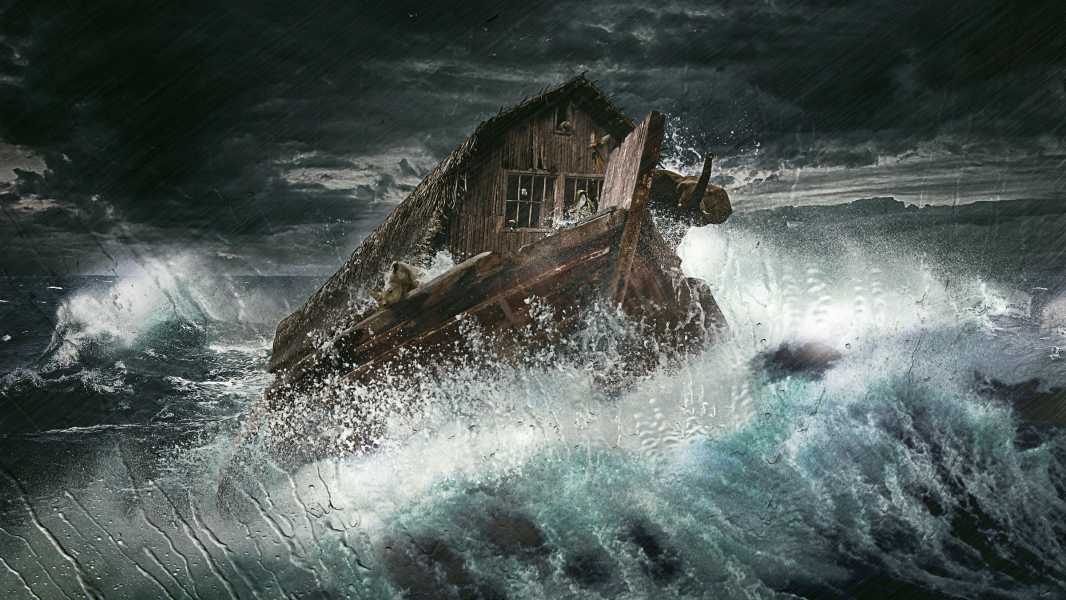
An illustration of Noah's Ark during the biblical flood. (Image credit: Pink_frog via Getty Images)
Noah's Flood is one of the most famous biblical stories. According to the Old Testament, “In the six hundredth year of Noah's life, in the second month, on the seventeenth day of the month, on that day all the fountains of the great deep were broken up, and the windows of heaven were opened” (Genesis 7:11, English Standard Version).
As the text tells us, God saw evil among the people and sent a worldwide flood. Because Noah was righteous, God commanded him to build an ark for his family and save two of every animal, bird, and reptile. But did Noah's flood really happen?
“The only thing we can say for sure from geology is that there was no global flood,” said David Montgomery, a professor of geomorphology at the University of Washington in Seattle and the author of The Rocks Don’t Lie: A Geologist Explores Noah’s Flood (W.W. Norton & Company, 2012). “If you take this literally as a global flood that swept the highest mountains, then, alas, there’s just not enough water on Earth to do that,” he told Live Science.
If the “heavens” opened up and all the water in the atmosphere poured out as rain, the planet would be flooded — but only to a depth of about 1 inch (2.5 centimeters), according to the U.S. Geological Survey. That's not enough water to justify a canoe, let alone a massive ark.
But what if it weren’t just water in the sky? If all the planet’s glaciers and ice sheets melted, sea levels would rise more than 195 feet (60 meters), according to NASA, which would add quite a bit more water. What’s more, a 2016 study published in the journal Nature Geoscience estimated that the top 1.2 miles (2 km) of Earth’s crust contains 5.4 million cubic miles (22.6 million cubic kilometers) of groundwater, enough to flood the Earth to a depth of 590 feet (180 m). That’s a lot of water, but there are cities located thousands of feet above sea level, while Mount Everest, the tallest mountain on the planet, sits at more than 29,000 feet (8,849 m). Plus, geologists have found no evidence of a worldwide flood in the rocks.
There are other points of contention in the biblical account. For example, Noah was 600 years old when the flood began – we know humans don’t live that long – and most species would not have survived if only two individuals had remained, as they would not have had enough genetic diversity to form a viable population. Moreover, it remains unclear how any animal would have made it to the ark in the first place – imagine penguins walking from Antarctica to the Middle East.
According to historical sources, the story of Noah's flood is a retelling of older legends and is likely an allegory rather than a literal account of the event. Ira Spahr, a professor of ancient studies at Ramapo College in New Jersey, told Live Science that the biblical stories in the Old Testament, written between 800 and 500 B.C., likely arose from older oral traditions and a variety of sources.
Other sacred texts, such as the Quran, have slightly different versions of the Noahide flood story, while earlier interpretations of the catastrophic flood date back to ancient Mesopotamian texts. Spar noted that there is a Sumerian flood legend, documented in fragments, that dates back to the late third millennium BCE.
“Who knows how long ago this story began?” Spar noted.
Sourse: www.livescience.com





